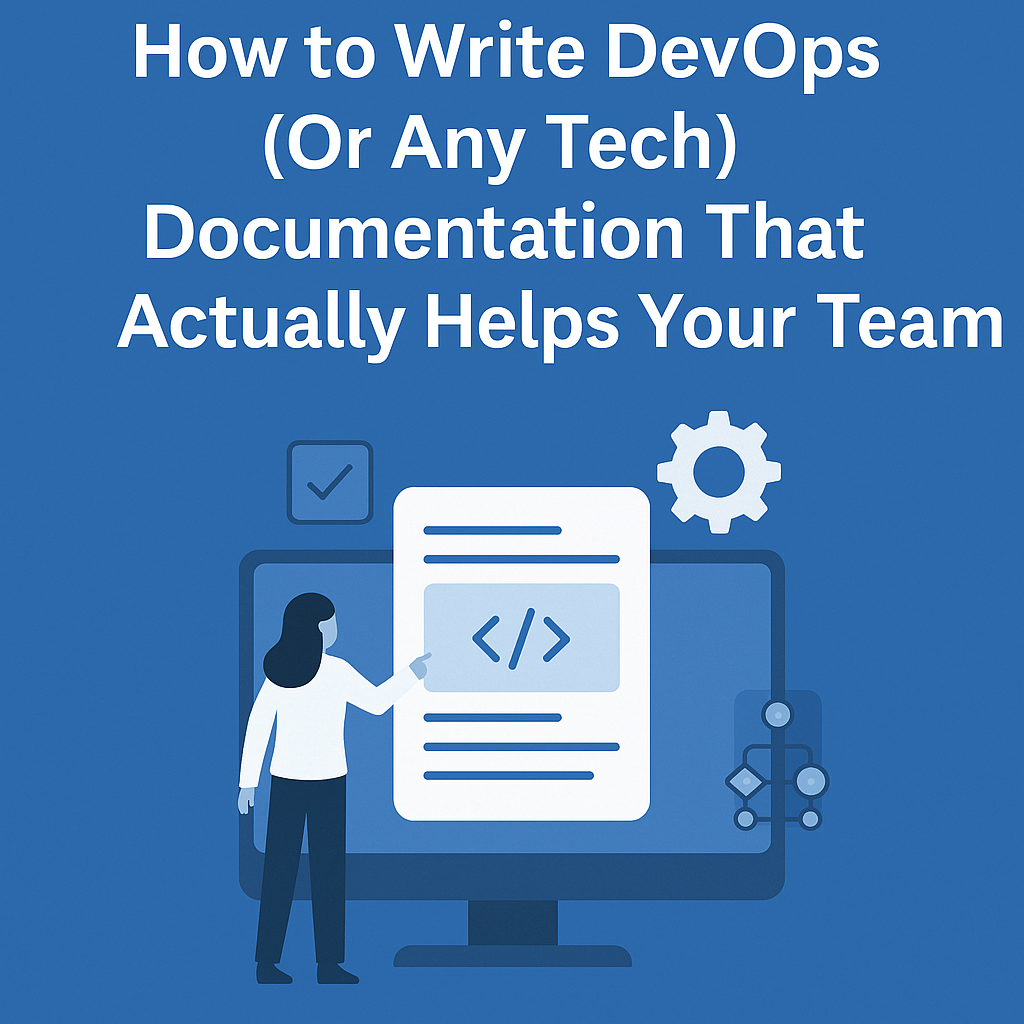How to Write DevOps (Or Any Tech) Documentation That Actually Helps Your Team

Introduction
In the fast-paced world of technology, documentation is often an afterthought—until it’s desperately needed. Poor documentation leads to confusion, wasted time, and even system failures. On the other hand, well-written documentation empowers teams, accelerates onboarding, and ensures smoother operations.
Whether you’re documenting DevOps processes, API integrations, infrastructure setups, or software architecture, the principles of effective documentation remain the same. This guide will walk you through best practices for creating tech documentation that your team will actually use and appreciate.
1. Understand Your Audience
Before writing a single word, ask:
- Who will read this? (Developers, QA engineers, product managers, new hires?)
- What do they already know? (Avoid over-explaining basics or assuming expertise.)
- What problem are they trying to solve? (Troubleshooting? Deployment? Integration?)
Example:
- For DevOps runbooks, focus on step-by-step commands and failure scenarios.
- For API docs, include sample requests, response formats, and error codes.
- For new engineers, provide context on system architecture and workflows.
2. Keep It Simple and Structured
Good documentation is scannable, concise, and logically organized. Use:
A. Clear Headings & Subheadings
Break content into digestible sections (e.g., “Prerequisites,” “Installation,” “Troubleshooting”).
B. Bullet Points and Numbered Lists
Instead of long paragraphs, use:
1
2
3
1. Run `docker-compose up`
2. Navigate to `http://localhost:8080`
3. Authenticate using `admin:password`
C. Code Blocks with Syntax Highlighting
1
2
3
4
5
# Good
kubectl apply -f deployment.yaml
# Bad
First, you need to apply the Kubernetes deployment file, which is usually named deployment.yaml, by running the kubectl command with the -f flag.
D. Diagrams and Visuals
A flowchart or architecture diagram can explain complex systems faster than text.
3. Make It Actionable
Documentation should enable action, not just describe concepts.
- Avoid: “The system processes data efficiently.”
- Better: “To reprocess failed data, run
./retry_failed_jobs.sh.”
Include:
✔ Exact commands
✔ Required permissions
✔ Expected outputs
✔ Common errors and fixes
4. Document the “Why,” Not Just the “How”
Context prevents mistakes. Instead of just listing steps, explain:
- Why this process exists
- What could go wrong
- When to use (and when not to use) a command
Example:
1
2
3
# Use `--force` only if the deployment is stuck.
# Warning: This bypasses safety checks and may cause downtime.
kubectl delete pod --force --grace-period=0
5. Keep It Up to Date
Outdated docs are worse than no docs. To maintain accuracy:
- Assign owners for critical documents.
- Link to source code/scripts (so updates reflect automatically).
- Encourage team contributions (GitHub/GitLab edits, comments).
- Add a “Last Updated” date.
Pro Tip: Automate docs validation (e.g., test code snippets in CI/CD).
6. Use Real Examples
Abstract explanations confuse; concrete examples clarify.
Bad:
“Configure the settings file appropriately.”
Good:
1
2
3
4
5
# config.ini
[database]
host = db.example.com
port = 5432
user = service_account
7. Optimize for Searchability
Teams often Ctrl+F docs. Help them by:
- Using consistent terminology (e.g., always “K8s” or always “Kubernetes”).
- Adding a table of contents (for long guides).
- Including an FAQ/Common Issues section.
8. Choose the Right Tools
Different docs need different formats:
| Purpose | Best Tool |
|---|---|
| Runbooks/How-tos | Markdown (GitHub/GitLab Wiki) |
| API Docs | Swagger/OpenAPI |
| Architecture | Diagrams (Draw.io, Mermaid) |
| Knowledge Base | Notion, Confluence |
9. Get Feedback and Iterate
- Ask teammates: Was this guide helpful? What’s missing?
- Track which docs are most visited (Google Analytics, wiki insights).
- Refine based on real usage.
Conclusion: Documentation as a Team Habit
Great documentation isn’t a one-time task—it’s a culture. By making it clear, actionable, and maintainable, you’ll save your team countless hours and reduce frustration.
Next Steps:
- Audit your existing docs—delete or update outdated ones.
- Pick one critical process and rewrite its documentation using these principles.
- Encourage your team to contribute and review.
Your future teammates (and your future self) will thank you. 🚀
Final Thought:
“Documentation is a love letter to your future self.” — Norman Fwamba
Would you like a template or checklist to get started? Let me know in the comments!
